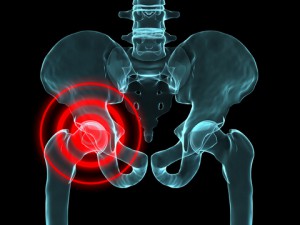Shared Decision Making

From the above review, it is clear that there is no one single treatment option for an individual experiencing hip or knee osteoarthritis. In fact there is a wide range of treatment options ranging from one extreme of self management to the other involving total hip and knee replacement. Research has shown that we could and should do better at informing and involving patients wherever possible. This principle is at the forefront of the governments White Paper ‘Liberating the NHS – no decision about me without me’. There is compelling evidence that patients who are active participants in managing their health and health care have better outcomes than patients who are passive recipients of care. There is still a tradition within the NHS in which clinicians are seen as the only competent decision makers, the expectation being that the clinician takes the clinical decision for rather than with their patient. Effective decision making is not yet the norm and many patients want more information and involvement in decisions about treatment, care or support than they currently experience. Shared decision making recognises a patient’s right to make decisions about their care, ensuring that they are fully informed about the options they face. To accomplish this, reliable evidence–based information on the likely benefits and harm of interventions or actions, including any uncertainties and risks needs to be provided, eliciting their preferences and supporting implementation. In doing this it should be recognised that both clinicians and patients are bringing expertise to the table in order to arrive at the most favourable course of action (Table 6).
| Clinician’s expertise | Patient’s expertise |
|---|---|
| Diagnosis | Experience of illness |
| Disease aetiology | Social circumstances |
| Prognosis | Attitude to risk |
| Treatment Options | Values |
| Outcome probabilities | Preferences |
Patient decision aids may take various forms, ranging from one page sheets that can be used as a basis of discussion within the consultation, through to more detailed leaflets and computer downloads. They differ from traditional patient information materials in that they are based on research evidence and are designed not just to inform patients, but to help them think about what the different options might mean for them and reach an informed preference. Typically they contain:
- A description of the conditions and symptoms
- The likely prognosis with and without treatment
- The treatment and self-management options and outcome probabilities
- What’s known from the evidence and not known
- Side effects or complications from treatment
- A means of helping patients clarify their preferences
- References and sources of further information.
Although it is clear that patient's desire and value information about patient choices, it is difficult to embed clinical decision making into everyday practice. Commonly voiced objections include (Coulter A, Collins A 2011):
- ‘We already do it’ – Stevenson et al (2000) demonstrated that there was a gap between what the clinician had shared with the patient regarding the evidence, risks, benefits and alternative treatments and what the patient reported from the clinical encounter.
- ‘Patients don’t want it' – The Care Quality Commission’s National Patient Survey
(2010) showed that 48% of inpatients and 30% of primary care patients would have liked more involvement in decisions about their care. - ‘Not appropriate for those with low health literacy’ – Well designed information and appropriate decision support material by trained staff has been shown to inform and engage patients with low health literacy (King et al 2011, O’Connor et al 2009) which makes them more active in their own health issues and less likely to defer to clinicians.
- ‘Patients will want inappropriate/expensive treatments’ – When decision aids have been trialled, weighing up the risks and benefits of treatment lead many patients to choose the least invasive therapy or for self management support. In a study of back pain patients with herniated discs more than 30% were less likely to choose surgery when fully informed (Deyo et al 2000).
- ‘No time to do it’ – Individual consultations may well take longer, but time spent engaging the patient in the decision may reduce the overall time spent with someone who is unsure or unhappy about a decision in which they were not involved (Bekker et al 2004)
- ‘It’s irrelevant and ineffective’ - evaluation of various forms of decision making show that it can lead to the following benefits:
- Improved knowledge and understanding
- More accurate risk perceptions
- Greater comfort with decisions
- More participation
- Fewer patients choosing major surgery
- Better treatment adherence
- Improved confidence and coping skills
- Improved health behaviours
- More appropriate service use
(Murray et al 2005, O’Connor et al 2009, Picker Institute Europe 2010)
‘There’s no incentive to do it’ – Those responsible for clinical pay and awards and for designing future tariffs and payment systems need to ensure that they provide incentives for organisations and clinicians to engage in shared decision making.

